Taking a leaf out of fellow PST Sander Dur’s recent post, I would like to explore if Product Ownership and Product Management are mutually exclusive or inclusive. I personally like his analogy that the Product Owner and the Product Manager are just two different t-shirts. Now, different people have different PoVs on the two, I will be sharing my learning and experiences in this post.
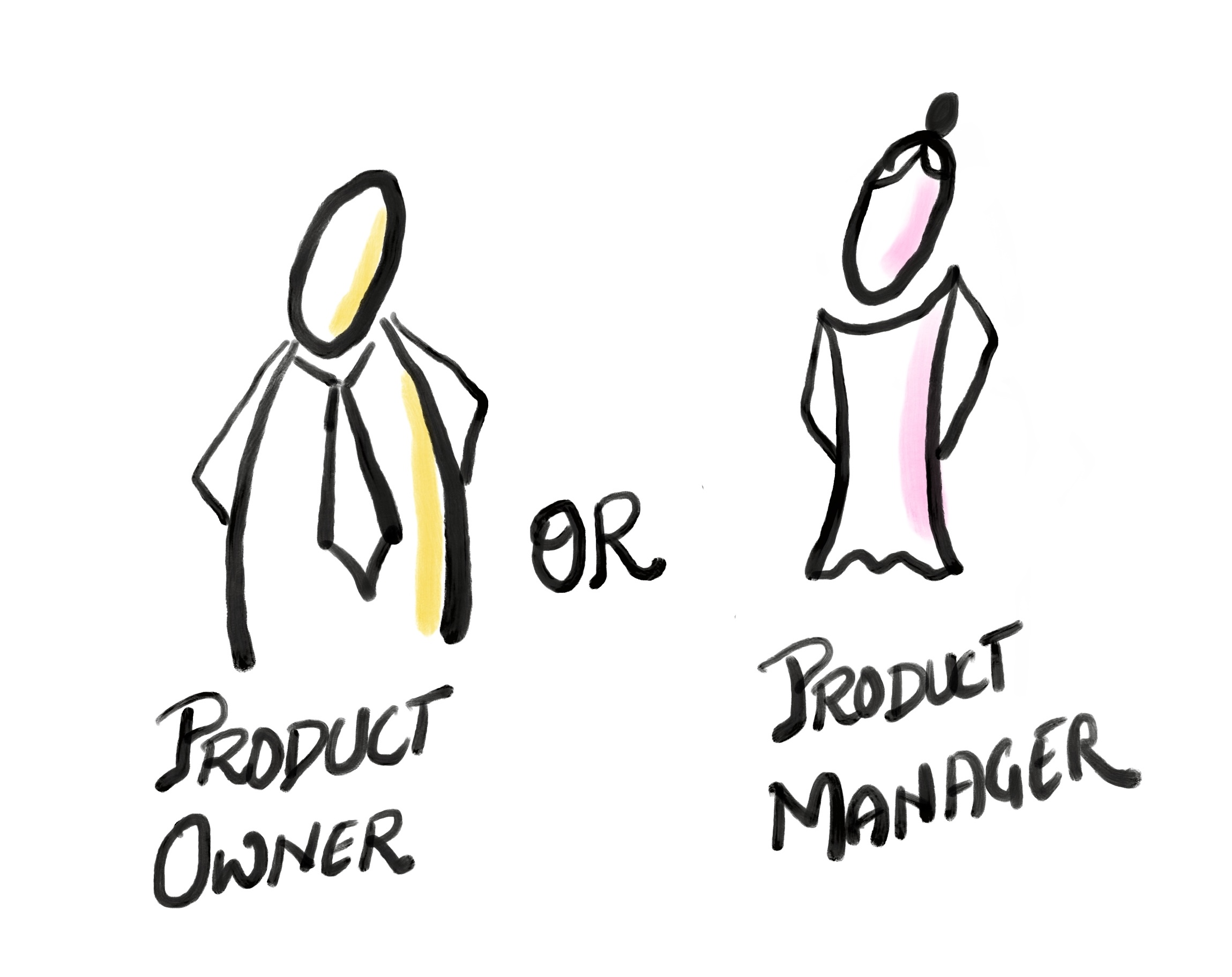
What’s a Product?
Let’s start with the very basics. A Product is anything that creates a desired outcome for its user or a desired impact for its producer. For ex: A camera is a product. For a photographer like me, it helps to capture moments; while for an OEM like Nikon, it generates RoI.
Why is this important?
We all are aware that Scrum was introduced to the larger world in the 90s and it was meant for software product development. But we all also can agree that software applications are not the only products that exist and Scrum is not the only approach to create or build a product. If I go back to my camera example, Nikon as a company was incorporated in 1917 and cameras were getting created much before Scrum existed. Which means that someone must be doing all the work from ideation to delivery of cameras to the end user. Who is that person? I will leave you with that question for the next couple of minutes.
And in the meantime, let me put forth another question -
Who is a Product Owner?
As per the Scrum Guide 2020 version:
Scrum defines three specific accountabilities within the Scrum Team: the Developers, the Product Owner, and the Scrum Master.
The Product Owner is accountable for maximizing the value of the product resulting from the work of the Scrum Team.
So Product Owner is an accountability within the Scrum Team, who is accountable to maximize the value of Product.
And how does the Product Owner maximize the value of the product? Scrum states - it may vary widely across organizations, Scrum Teams and individuals. In short, Scrum has no say in how a Product Owner does their job.
What does it take to make a Product Valuable?
When I was learning the ropes of Product Ownership from my dear friend and colleague Sumeet Madan, he introduced me to the Product Quadrant. I think some of you might have come across it. It looks as below:
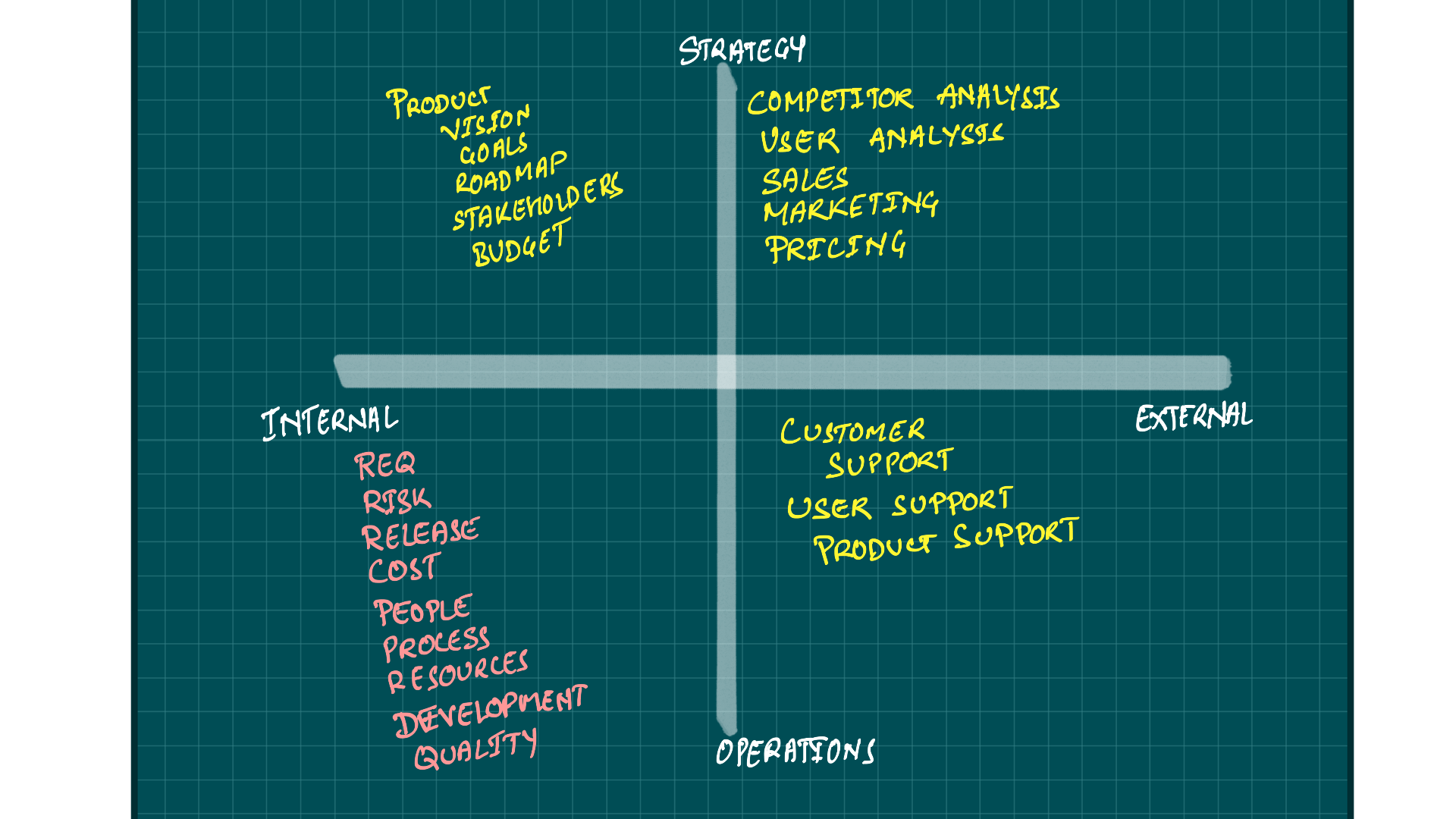
Now as you can see in the image, there is Strategy and Operations, and either of them can be Internal as well as external. And there are so many activities which need to be performed. And many (if not all) of these activities have existed since we started creating products. So who would do these activities? And this takes us back to the earlier question - who is that person who does the work from ideation to the delivery of the product?
Well, the answer is pretty simple. All the activities that we see in the quadrant are related to Product Management and so a person who is adept at these activities is called a Product Manager.
Then where does the Product Owner fit in?
Well, you see in the Product quadrant, most activities that are mentioned within the Internal-Operations quadrant were traditionally taken care of by a role called as “Project Manager”. When the agile moment happened and Scrum started to become the de-facto approach to product delivery; the typical responsibilities of the project manager were shared across the three accountabilities within the Scrum Team. The other three quadrants still were taken care by the person called Product Manager, as depicted in the following images:
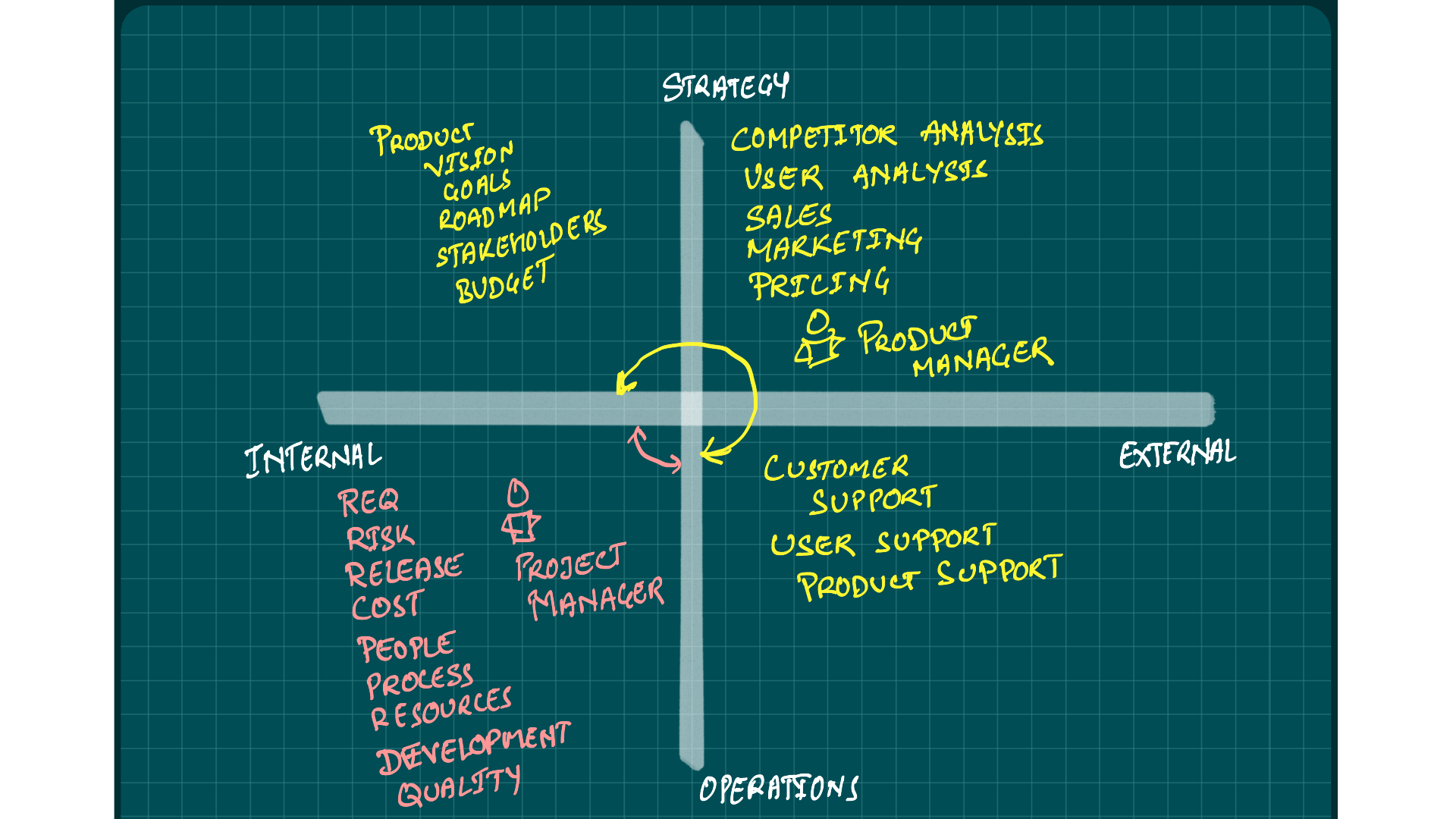
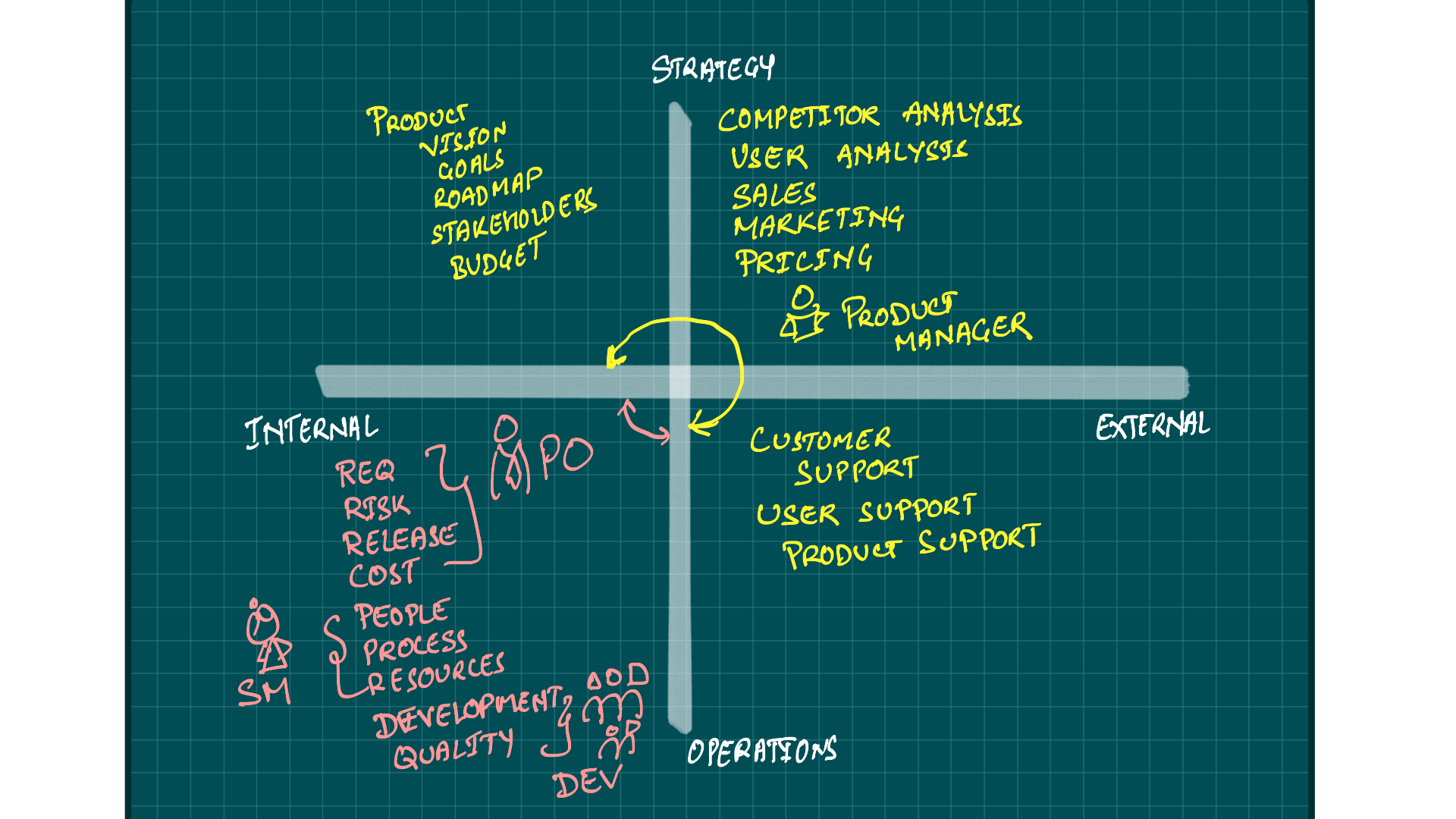
However, if a Product Owner really has to maximize the value of the product then this person cannot be disconnected from the rest of the three quadrants. In order to really take the ownership of the Product and its value maximization, a Product Owner has to be across all the quadrants and thereby all the activities that may fall under each of them. All these activities originate in Product Management and so a Product Owner needs to be a “pro” at Product Management.
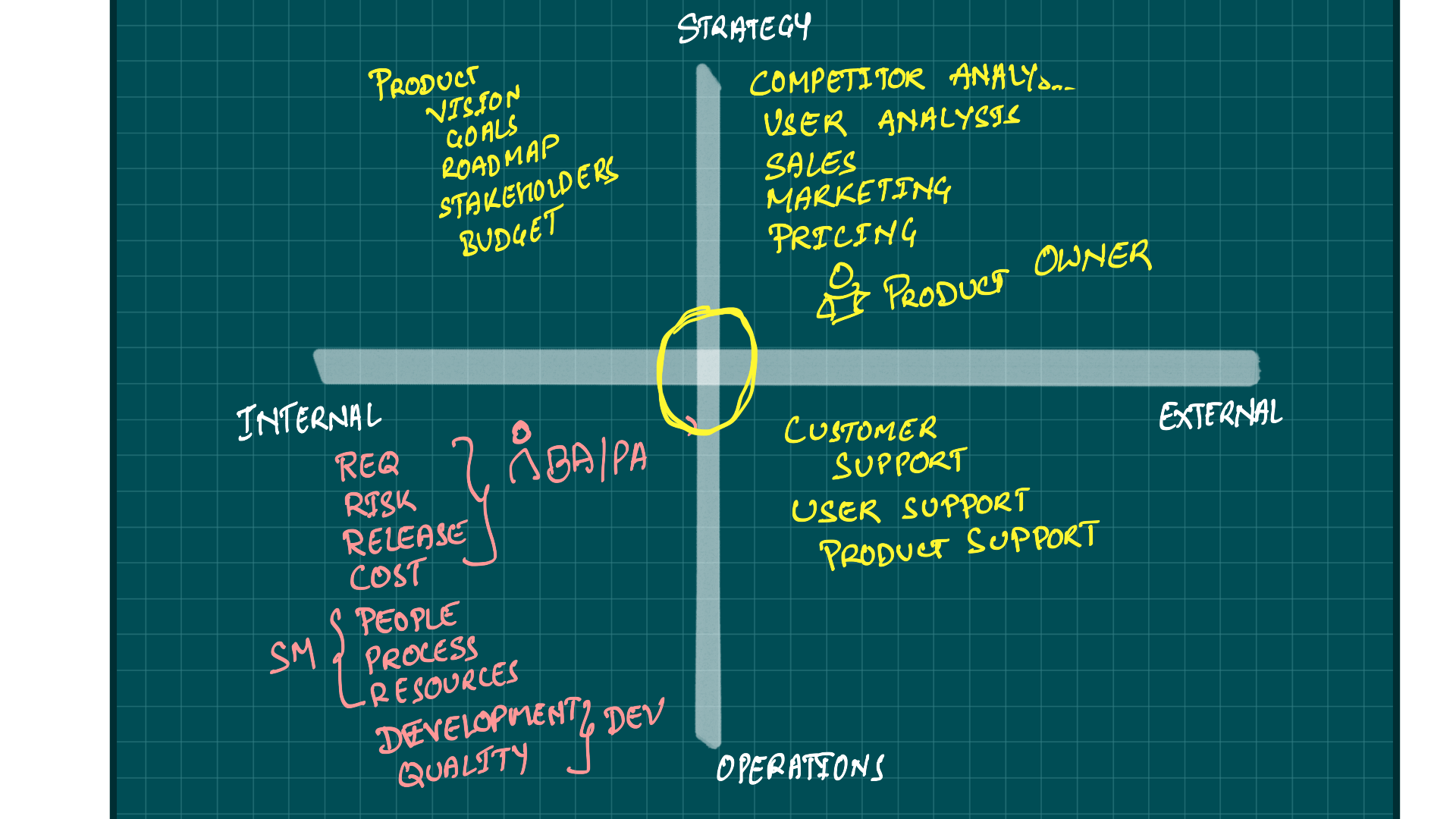
And a person who is a “pro” at Product Management is usually known as a Product Manager. So in other words a Product Owner is just the Product Manager wearing a different t-shirt as highlighted by Sander Dur in his post.
Conclusion:
In my personal experience, in many large organizations both the Product Owner and Product Manager co-exist. And often their responsibilities are divided. One is more internal facing while the other is external facing.
Now there is a catch, you might have a Product Owner if and only if you are using Scrum as your approach to Product Development, if you don’t use Scrum then you do not need a Product Owner in your team or organization; a Product Manager will do.
Also, if you do use Scrum for Product Development then a Product Manager could be an organizational designation while Product Owner could be an accountability on a Scrum Team and both could be the same person.
P.S. If you are interested to learn more about Product Ownership then you can always join one of our Product Ownership courses.
